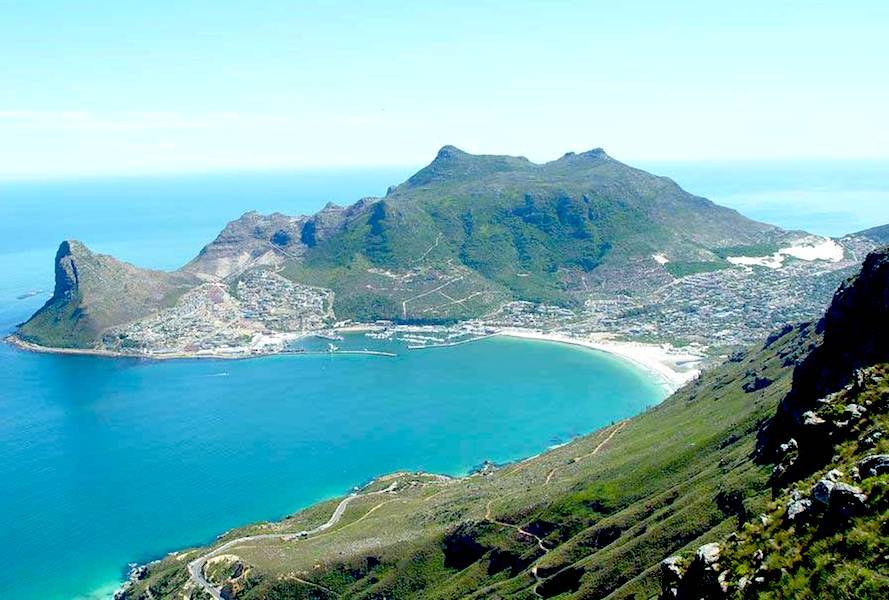
If there are a few best and most magical destinations that you shouldn’t miss to pay a visit before you die then Table Mountain National Park is one of them! This spectacular national park is located on the southwestern edge of Africa and forms part of the Cape Floristic Region World Heritage Site constituting mainly the remarkable peninsular mountain chain that extends from Signal Hill in the north to Cape Point in the south about 60 kilometers. The narrow finger of land with its most stunning valleys, beaches, and bays is surrounded by the Atlantic Ocean in the west and the warmer waters of False Bay in the East. Within its boundaries, there are 2 world’s most popular landmarks; the majestic Table Mountain and the legendary Cape of Good Hope. Other interesting areas that you should consider a must to visit include the Boulders penguin colony, silver mine, Table Mountain, and others.
This park was established in 1998 and it was previously called the Cape Peninsular National Park. It was founded to offer refuge to the natural wonders of the Table Mountain chain and the unique Fynbos vegetation. This protected area is run by South African National Parks and it features as part of the UNESCO Cape Floral Regional World Heritage Site. The Table Mountain National Park is divided into 3 sections and each features unique attractions. The Table Mountain section features the Lion’s Head, Table Mountain, and Signal Hill and this also covers the Black Table, Devil’s Peak, the 12 apostles, and the orange kloof. The Silver Mine Tokai area extends from northwest to southeast across the peninsula from the Atlantic seaboard to the False Bay coast. It consists of the Constantiaberg, Steenberg Peak, and Kalk Bay mountains.
This park is also credited for its unique floral species most of which are endemic, especially protea Erica, restio, and asteraceae species and geophytes. There are also indigenous vegetation types especially the peninsula sandstone Fynbos and cape granite Fynbos as well as silver trees. Table Mountain National Park is situated within Cape Floral Kingdom an area that features as a bio-diversity hot spot and mostly attracts botanists. Besides, this park also boasts of its unique wildlife species like lions, leopards, black-backed jackals, spotted hyenas, black rhinos, kudus, eland, mountain zebra, bontebok, elephant, caracal, rock hyrax, cape grysbok, klipspringer, chacma baboons, the Table Mountain ghost frog, and many others. Scenic drives can be conducted around Victoria Road, Simon’s Town, Scarborough, Cape Point, Champ Man’s Peak Drive, and the famous picnic areas are found around the Glen, Van Reinbeck Park, Tokai Witsand, Millers Point, Kirstenbosch Botanical Gardens, Constantia Nek, Soetwater and others.
Tourist activities in Table Mountain National Park
The Table Mountain National Park is popular for its unique and diverse wildlife. It provides a wide range of activities for tourists to engage in while on safari. The main activities include;
Hike up Lion Head, which is situated in the northern part of the park and allows visitors to stretch their legs and explore the spectacular Table Mountain; scenic drive on Signal Hill which also offers the most dramatic views of the Table Mountain, the Ocean, and Cape Town; Explore the Table Mountain while on the cable car to its top; visit the Kirstenbosch botanical gardens-eastern slopes of Table Mountain; Boulders beach, visit the Cape point, birding, hiking, mountain biking along the trails within the park, mountain climbing, Angling and others.
Getting to Table Mountain National Park
Table Mountain National Park covers an area of about 300 square kilometers and it features several entry points. To access this park, you will need a permit/wild card or pay an entrance fee at every point. There are about 12 major entry points at this park-the Tokai picnic, cape of Good Hope of Cape Point, Newlands picnic, Perderloof, Braai, Oudekraal, Silver Mine, boulder beach, and others. Alternatively, you can take a flight to Cape Town International Airport and then rent a vehicle that will take you up to the park.
Where to stay in Table Mountain National Park?
As you enjoy your wilderness experiences you will need the best accommodation facility that offers you total comfort. The nearby accommodation options include the self-catering accommodation that is offered around the park, especially in the four camps. Others include the Atlantic View Cape Town Hotel, Orange Guest House, Manna Bay Fine Boutique Hotel, Hely House, Villa Simona Bed and Breakfast, Rutland Lodge Guest House, Kidger House, Sea Star Rocks, Apartment Cape Town, Abbey Manor Luxury Guest House, Villa Zeeicht, Esperanza Guest House, Eland and Duiker cottages.
Climate of Table Mountain National Park
Table Mountain National Park is situated within an area that experiences mainly the Mediterranean type of climate characterized by warm, dry sunny days during summer and cold, wet seasons in the winter though you have to expect it to rain any time of the day. The peninsula tends to be windy especially when the southeaster famous as the Cape Doctor blows in the summer months. The average temperature ranges from 16 to 30 degrees Celsius in the summer with the hottest month being February and during winter, the temperatures fluctuate between 7 and 18 degrees Celsius.
In conclusion, Table Mountain National Park is undeniably one of the magical safari destinations that you shouldn’t miss to pay a visit to while on vacation in South Africa.


